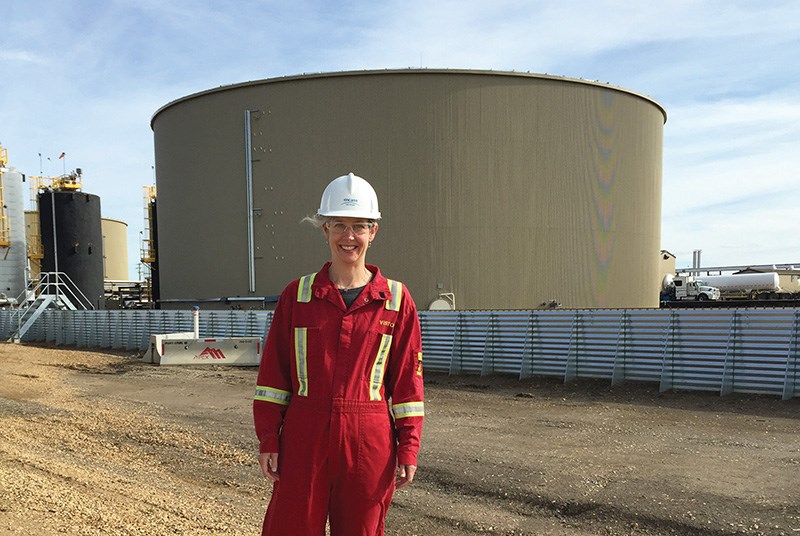Ultimately, seeing the natural gas industry up close, though impressive, didn’t sway Councillor Karen Elliott that a liquefied natural gas (LNG) plant is right for Squamish.
Mayor Patricia Heintzman and councillors Doug Race, Susan Chapelle, Ted Prior and Elliott last week took Dawson Creek Mayor Dale Bumstead and council up on their offer to come tour some of the oil and gas infrastructure in that community.
It was an eye-opening experience for Elliott, who ran on an anti-LNG platform in the municipal election.
“My own personal feeling is that Woodfibre is still not the right fit for our community. Even having better information on the upstream production of gas and speaking with the B.C. Oil and Gas Commission and understanding what is going up there better than I did, when I look out in the future of this town, for me personally, I don’t see the fossil fuel industry fitting with our brand or the economic development vision that I have for Squamish,” she told The Squamish Chief.
Although it didn’t change her mind on LNG in the district, Elliott said she was impressed by what industry could do for a community.
“I learned so much,” she said, adding she had never been to any gas industry sites previously.
The Squamish group toured community amenities such as the Encana Events Centre, which has an arena, an aquatic centre, climbing wall and indoor equestrian ring and stables for 100 horses, that was built with industry and government funding.
The facilities were very impressive, Elliott said. “I think industry is wanting to support the community in any way it can,” she said.
What she noted though was that industry money can provide capital, but it can’t provide operational funding.
“So Dawson Creek has to subsidize that Encana Events Centre to the tune of $1.5 million a year,” she said. “It is a double-edged sword. You can end up with some great facilities; you still have to have the tax base to pay for them and that is the challenge I think for Dawson Creek is building a sustainable community.”
Elliott said she was fascinated with two industry-built water-recycling facilities in the city: Shell’s Dawson Creek Reclaimed Water Project and Encana Corporation’s water hub.
“They are sort of leading the way in terms of how to reuse what they call produced water, so water that has already been used in fracking and also trying not to use potable water,” she said.
The Shell facility uses reclaimed water from Dawson Creek’s wastewater facility on their site.
“Instead of taking it from rivers or ponds around Dawson Creek, taking it from the wastewater facility… it goes around in a circle.”
Elliott said that the tour was of the “best of the best” and that other companies may not be able to pull off such environmental aspects.
“We saw big companies like Shell and Encana that have the capital resources to invest in things like water reclamation,” she said. “Shell spent over $100 million on this project, Encana had spent $75 million just on their water hub and that doesn’t include all the pipeline infrastructure that has to go in to get the water out to the sites and back again.
“Not everyone in industry can reuse water like Shell and Encana are because they simply don’t have the capital to invest in that, so there are still a lot of players up there using surface water and even potable water, which I think is a shame.”
The Squamish contingent also got to tour a site in Fort St. John where hydraulic fracturing takes place.
“If you have never been on one before, it is industry on steroids,” she said, adding the operations she saw were well run.
“All the sites that we saw were extremely well maintained, looked organized and were clean, so we certainly didn’t see any fly-by-night operations.”
The Squamish council did not add to the Squamish budget to pay for the trip, Elliott stressed. The City of Dawson Creek paid for most of the trip with donations from northern airline Hawkair Aviation, which donated flights for four. Hotel rooms were also provided at no charge to Squamish council, and Squamish council conference money was pooled to cover the one extra council member, according to Elliott.
She said Dawson Creek’s mayor and council were open and generous hosts, and she hoped Squamish could host them in the future. Council members will do a debriefing of their trip for the public at a future committee of the whole meeting, she said.




